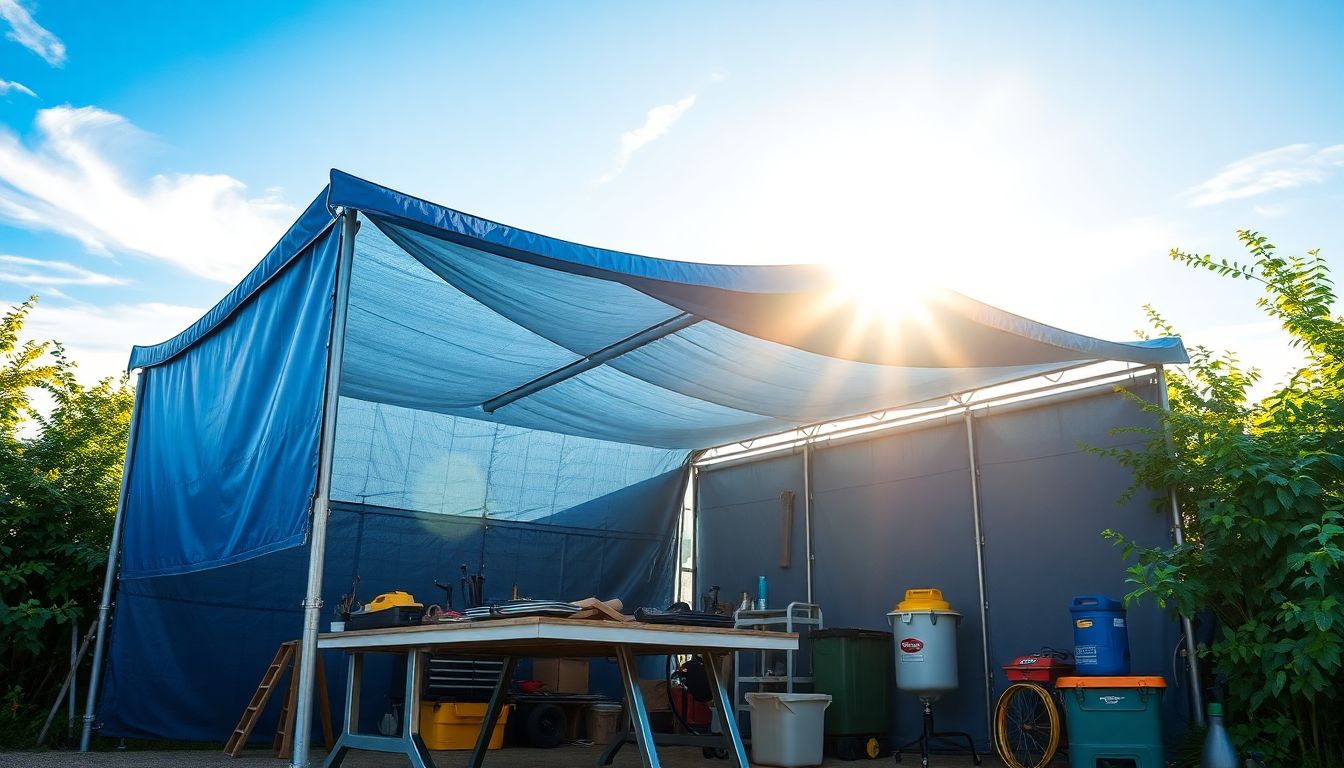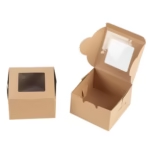A bright, inviting, and energy-efficient environment depends on natural light. Maximizing sunshine can help you to see better and lower energy expenses whether you are protecting an outside space, setting up a temporary shelter, or working in a warehouse. Using a sheltered Heavy Duty Tarpaulin is among the most effective techniques to accomplish this. Apart from shielding, these sturdy, weather-resistant covers let sunlight pass through to produce a well-illuminated atmosphere.
What is a Sheltered Heavy Duty Tarpaulin?
A robust, flexible sheet constructed of polyethylene, PVC, or canvas is called a sheltered heavy duty tarpaulin. These tarps let light pass through while yet able to endure adverse weather including rain, wind, and UV radiation. Their great range of thicknesses, hues, and transparencies qualifies them for a number of uses.
Benefits of Using Heavy Duty Tarpaulin for Natural Light
Energy Effectiveness
Using a semitransparent tarpaulin lessens the need during the day for artificial illumination. Particularly in big areas like warehouses, studios, or greenhouses, this can greatly reduce energy bills. Aside from being affordable, natural light helps to provide a more comfortable workplace.
UV Protection
High-quality tarpaulins exclude damaging ultraviolet (UV) rays while still letting light pass through. This shields under materials as well as individuals from sun damage. UV-resistant tarps, for instance, keep equipment and supplies from decaying or fading outside in storage or construction sites.
Weather Resistance
Built to withstand severe circumstances. These Tarpaulins UK offer protection even in heavy rain, high winds, or intense sunlight while keeping interior illumination. Long-lasting strength is guaranteed by strengthened edges and rustproof grommets.
Adaptability
These tarps may be employed in numerous ways: temporary roofs, wall covers, greenhouse panels, or perhaps shaded outdoor seating areas. Their adaptability renders them perfect for business as well as domestic uses.
Economical Approach
Heavy duty tarps provide a significantly more affordable choice than fixing glass roofs or continuous skylights. Their simple installation, replacement, and movement make them a sensible solution for temporary or semi permanent construction projects.
Best Purposes for Light Transmitting Tarpaulins
Greenhouses and Plant Nurseries
Plants flourish in natural light; a semitransparent tarp can provide the ideal greenhouse environment. It evenly diffuses sunlight, so averting overheating and encouraging strong plant development. The waterproof characteristic also shields plants from intense rain.
Outdoor Shelters and Canopies
For event tents, carports, or patios, a light-filtering tarp offers shade without unduly blacking the surroundings. It maintains the room cool in summer yet lets in enough sunshine for vision.
Warehouse Coatings and Construction
Construction sites and warehouses frequently need big covered spaces. Ensures employees have enough visibility without depending solely on electrical lighting, a sturdy tarp with natural light transmission also protects equipment and supplies from weather damage.
Agricultural and Livestock Sheds
These tarps help farmers conceal feed storage facilities or animal shelters. The tarp’s toughness guarantees long-term defense and the natural light helps to preserve a clean and brilliant surroundings.
Tents for Momentary Event
Semitransparent tarps offer protection for outdoor markets, fairs, or sports events while maintaining the area light and welcoming. Ideal for temporary use, they are simple to erect and dismantle.
Selecting the Appropriate Heavy Duty Tarpaulin for Natural Light
Nature of Material
Search for UV-resistant polyethylene or PVC tarps since they best combine durability and light transmission. Steer clear of inexpensive, thin tarps that could rip easily or limit too much sunshine.
Degree of Transparency
While some tarps are completely opaque, others are clear or partially translucent. Choose a tarp with great transparency for maximum natural light, but make sure it still offers enough UV protection.
Edges That Are Strengthened
Strong metal or plastic grommets and strengthened hems guarantee the tarp remains firmly in position even in high gusts. This prolongs the life of the tarp and stops fluttering.
Customization and Size
Before buying a tarp, calculate the surface area you need. Many suppliers provide bespoke sizes to match particular needs, therefore guaranteeing complete coverage without extra fabric.
Installing Advice for Best Durability and Light
Correct Anchoring
Tighten the tarp using bungee cords, ropes, or zip ties. This stops the wind from raising it or causing damage. Think a metal or wooden frame for added stability for big constructions.
Correct Sunlight Angle
If you’re using the tarp as a roof, angle it somewhat to let in the most light. A steeper slope also aids in rapid rainwater run-off, thereby avoiding puddling.
Often Needed Maintenance
To eliminate dust and trash, which can lower light transmittance, occasionally clean the tarp with mild soap and water. Look for tears or soft areas and fix them immediately to stop more destruction.
Layering for Varying Light
In some situations, controlling the amount of light entering the room can be achieved by layering several tarps with varying translucency degrees. This helps greenhouses or workshops where light intensity must be changed.
Conclusion
To get the most natural light in several environments, a protected heavy-duty tarpaulin is an outstanding solution. These tarps offer weather protection, strength, and energy efficiency whether for outdoor shelters, building sites, greenhouses, or transient activities. Selecting the best material, transparency level, and installation technique allows you to develop a bright, secure area devoid of great dependence on artificial illumination.
Read More Articles: https://seoexpert.fun/





